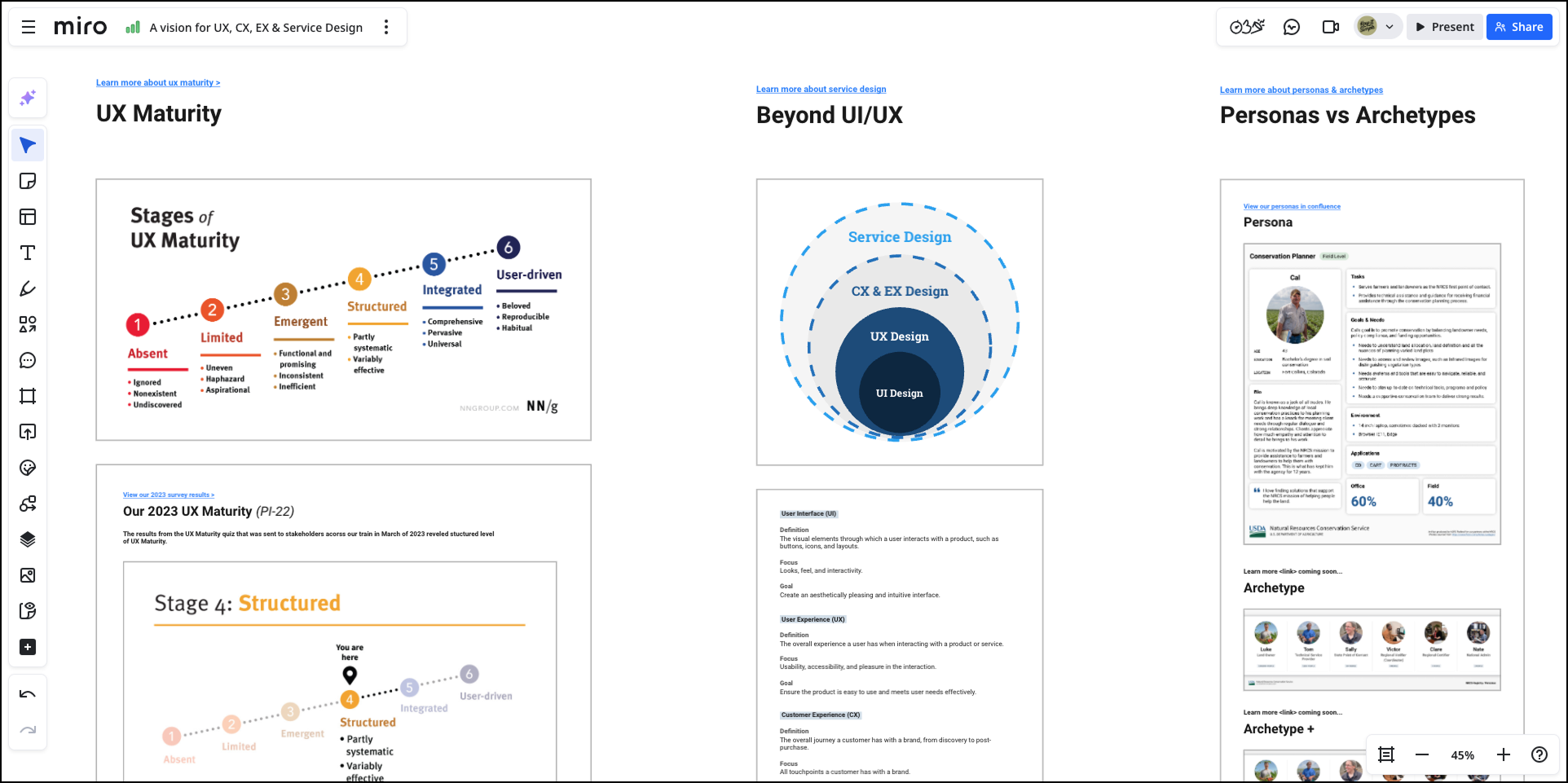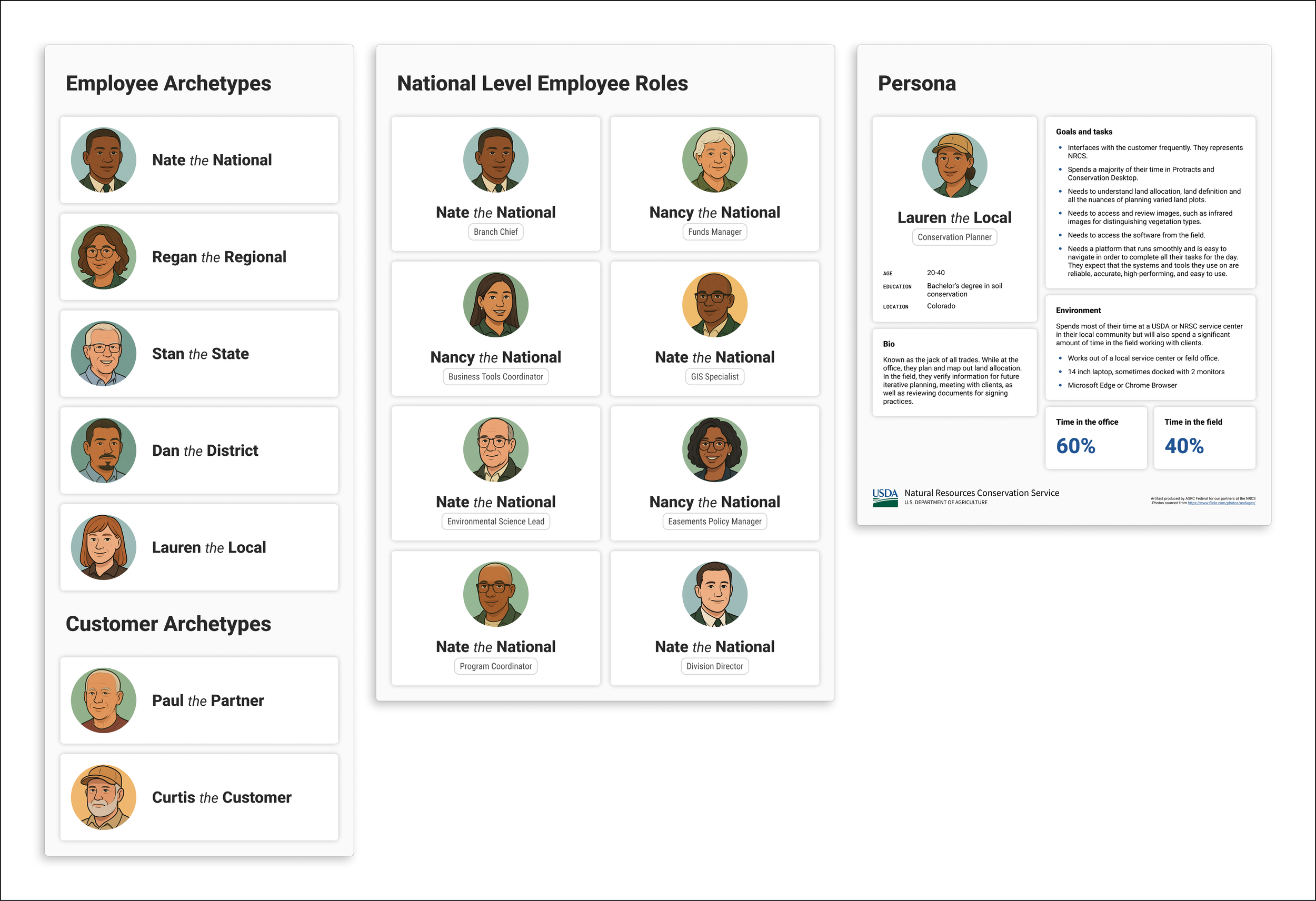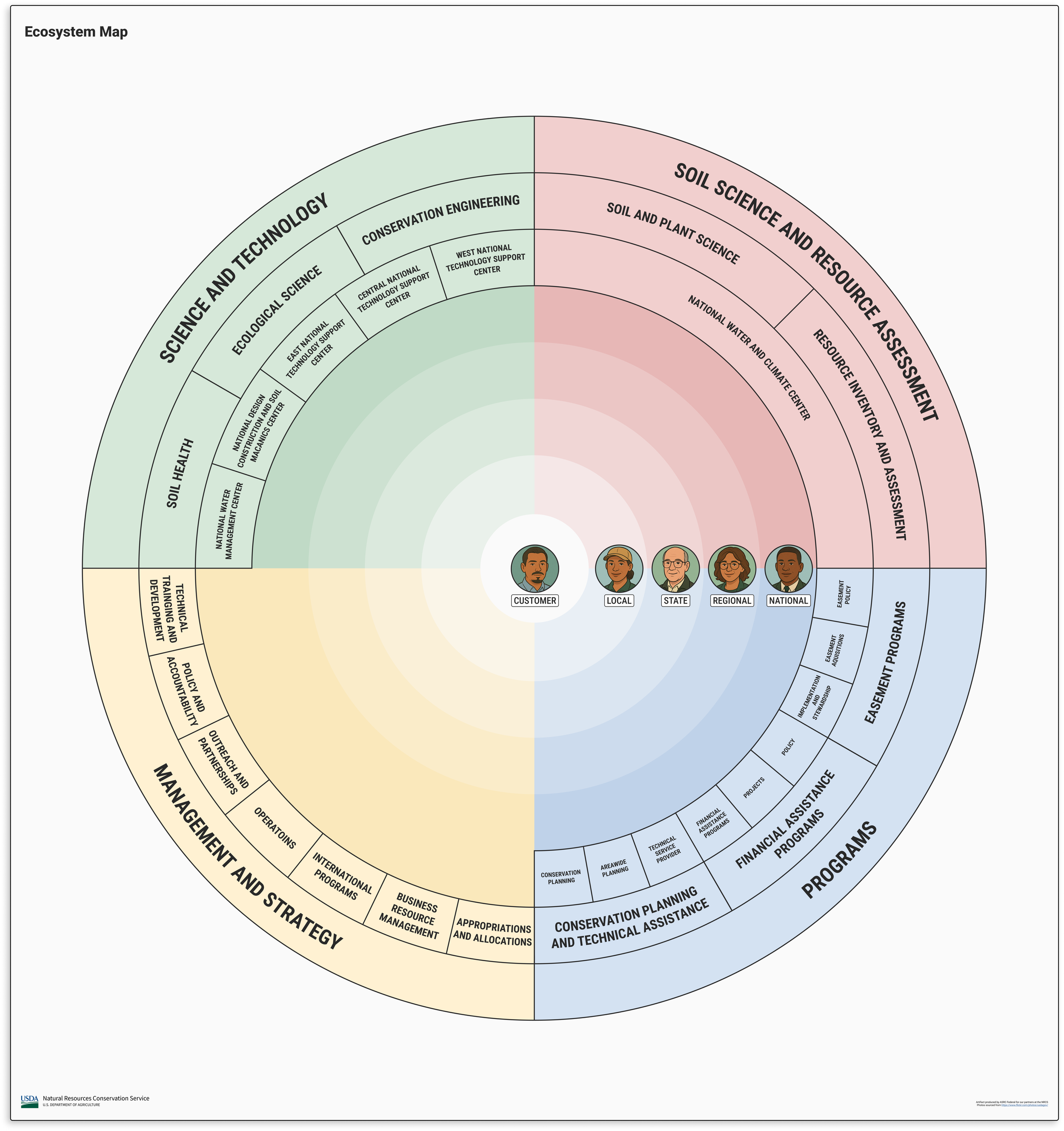CASE STUDY
Growing UX maturity and evolving personas into agency-wide archetypes
Overview
When I first joined the program, UX maturity was low. Designers mostly worked alongside developers to create mockups for stories that were already defined. We weren’t part of the early discovery phase where design can help clarify the problem and shape the solution.
At the time, our team had a few quick, assumption-based personas created for specific products. They worked short-term, but they didn’t reflect the complexity of the agency or the variety of users we served. With limited research and little awareness of UX, they didn’t gain traction with product or development teams.
Our goal was to grow UX maturity across the program and rebuild these personas into high-level archetypes that could scale across the entire agency.
Discovery and building trust
The turning point came when UX began working more closely with product management and government stakeholders. We weren’t just executing mockups anymore. We were helping define features, clarify requirements, and understand how users moved through the larger ecosystem.
As we built trust, we expanded our research efforts. We brought in a dedicated researcher, conducted structured interviews, and observed users during training and testing events. This helped us understand the people behind the products — not just their interactions with a single interface, but how they navigated across systems and workflows.
These insights helped stakeholders see the bigger picture. We connected dots between fragmented systems and showed how disconnected tools created inefficiencies for employees and, ultimately, worse experiences for the public.
Evolving personas into archetypes
With stronger research in place, we revisited the original personas. What began as isolated profiles became a system of flexible, agency-wide archetypes — each capturing shared motivations, needs, and challenges across different levels of the organization.
Each archetype could then branch into personas tailored to specific roles or departments, making them reusable across multiple products while maintaining a shared understanding of users.
We used these archetypes to build an ecosystem map showing how people, systems, and services interacted.
The map helped everyone see how disconnected systems caused duplicated effort, slowed workflows, and impacted service delivery.
Measuring and advancing UX maturity
To understand our progress, we ran a UX maturity assessment across the organization. From there we:
Mapped team skills and identified hiring and training gaps.
Created a UX Vision grounded in research and our new artifacts.
Held alignment sessions with every group in the development lifecycle — management, product, engineering, QA, accessibility, content, and architecture.
As teams began referring to users by archetype names and stakeholders used them in their own presentations, we saw the culture shifting.
Outcomes
Scalable archetypes representing users across the agency
An ecosystem map clarifying relationships between people, systems, and services
Increased trust and alignment between UX, product, and stakeholders
Measurable growth in UX maturity
A repeatable framework for research and alignment
Reflections
We moved from designing screens to shaping strategy. From isolated personas to living archetypes that connected the system. And from talking about users to truly designing for people.
Hearing people across the agency use our archetype names unprompted was the moment I knew the work had lasting impact.



